My younger kid is playing with an astrophysical simulation called “Universe Sandbox 2”. Of course, he’s using it in his own way, which is to crash things spectacularly, but it made me want to try some ideas of my own.
First of all, I must say I’m very impressed with this software, since the n-body physics seems to work very accurately. That this kind of software is available outside of NASA, ESA and other space agencies’ supercomputers and can be used by the general public is outstanding.
What I wanted to test were two things. First, how sensitive the solar system is to modifiers; essentially, if you add something significant, does all hell instantly break loose, and second, I wanted to test the Nemesis hypothesis, basically I wanted to test what would happen to the solar system if I added a red dwarf star outside the Kuiper belt, to see if we would get a radically different state of the solar system, which would preclude the Nemesis hypothesis, or if the state would remain more-less as it is, making the hypothesis viable.
You see, every other day we get those “sky is falling” characters rambling about how there’s a Nubiru planet X on the outskirts of the solar system and how it’s going to wreak havoc on the inner solar system and usher the Apocalypse. So I wanted to make it even more extreme and radical than their scenarios. I inserted a copy of Neptune between Mars and Jupiter, right outside the asteroid belt. My expectation was that a gas giant in this sensitive position is going to at least disrupt the orbits of Ceres and Vesta, if not the entire inner solar system.
Then I accelerated the simulation to 52 years per second and waited some 10000 years to see what happened.
This is the control, the inner solar system at year 11600:
This is the solar system with a Neptune added between Mars and Jupiter, year 11800:
The four planets of the inner solar system are basically unchanged, except for the slight “tug” Mars experienced. Jupiter influences orbital eccentricity of the “inner Neptune” to some degree, but it appears to go back and forth. Everything else looks unchanged. Let’s go forth in time to year 15000:
No significant changes. Nothing collided, nothing had its orbit significantly disrupted, nothing fell into the Sun or was ejected from the solar system. Basically, business went on as usual for 13000 years of my simulation.
So, after I absorbed the shock of this, I set up another simulation – I placed the Wolf 359 red dwarf star on the outer rim of the Kuiper belt, 439 AU from the Sun. To make it clear how far that is: Pluto is at 29.8 AU, but Pluto is a relatively well behaved Kuiper belt object with low orbital eccentricity. Eris, for instance, has a perihelion of 37.6 AU, and aphelion of 97.6 AU. Sedna, the most eccentric of them all, has a perihelion of 76 AU, and aphelion of 860 AU. That is 119.2 light hours, or 0.0136 light years, or, in more scientific terms, it’s in the kingdom of far far away. 🙂
So, I placed a M-type star with 0.15 solar masses well within Sedna’s orbit and let things run.
Things started looking interesting at year 10000, when our red dwarf was about to cross Sedna’s path:
Oh yeah, that’s going to be very bad. It sent Sedna right into the inner solar system, where it is going to wreak havoc.
That’s about the worst thing that could possibly have happened and very much along the lines of Nubiru-type doomsday prophecies.
Year 11925, Sedna went through the inner solar system on the way in, passed around the Sun, went through the inner solar system on the way out, missed everything, and went out into the outer solar system, approaching the point where it encountered the Wolf, which more-less became its new aphelion. This process was repeated several times until the 18000s, when it had the misfortune of encountering the Wolf in the same place, and it was slingshot away from the solar system forever:
I let the simulation run for a while, till the year 32751, and checked the state of the inner solar system:
Sedna’s rampage wasn’t without consequences. Venus was seriously disrupted, its orbital eccentricity is significantly changed and it now apparently intersects Earth’s orbit. I say “apparently” because this is an artifact of 2D projection; in 3D, they miss each other by quite a margin, due to the offset from the ecliptic plane.
“Wait a minute”, you’ll say. “You want to tell me that you turned the solar system into a binary star system, with Sun having a red dwarf companion in the outer Kuiper belt, that this star disrupted the orbit of a dwarf planet, flung it into the inner solar system, this repeated several times until the dwarf star finally kicked the dwarf planet out the solar system, and the result of all this knitting in-and-out through the inner solar system, after 30000 years of simulation, is that Venus had its orbit disrupted enough for us to have a very close look at it every now and then, but without other consequences? Nothing even collided?” Yup, you got it right. Nothing even collided. We just had the worst possible combination of the Nemesis hypothesis and Nubiru hypothesis, where a companion star flings a small planet into the inner solar system, and nothing even collided.
The solar system is so incredibly difficult to fuck up, you need to resort to completely extreme shit in order to do it, such as having a neutron star or a black hole traverse through it. In short, I heartily recommend the Universe Sandbox. You’ll never look at the “something big disrupted the Oort cloud and we are going to immediately all die” theories the same way. 🙂
On the other hand, this makes the Nemesis theory, of Sun having a dim stellar companion somewhere out there, completely plausible, as this possibility wouldn’t result in a solar system that was much different from what we know. It just has to be well outside Sedna’s orbit.

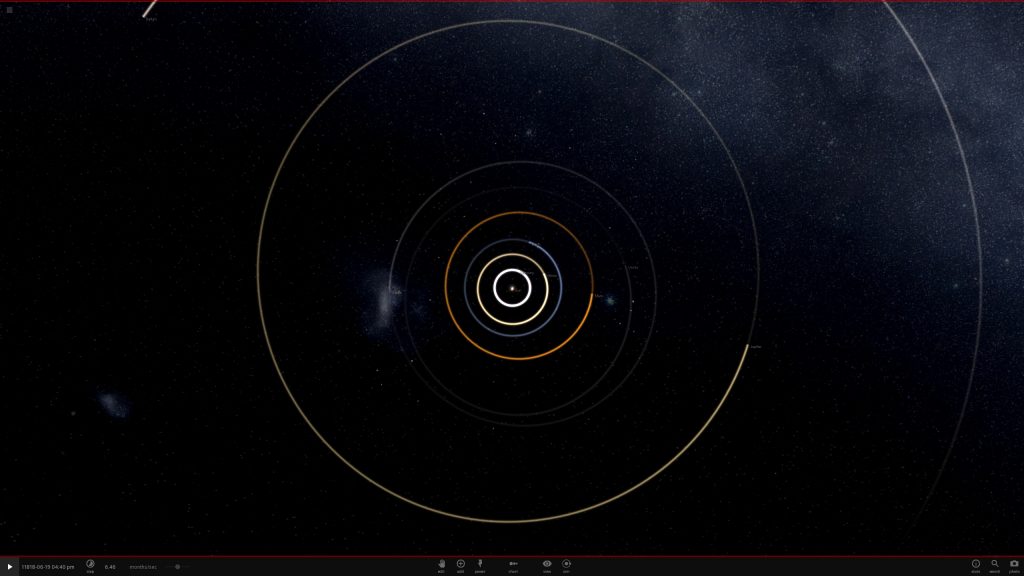
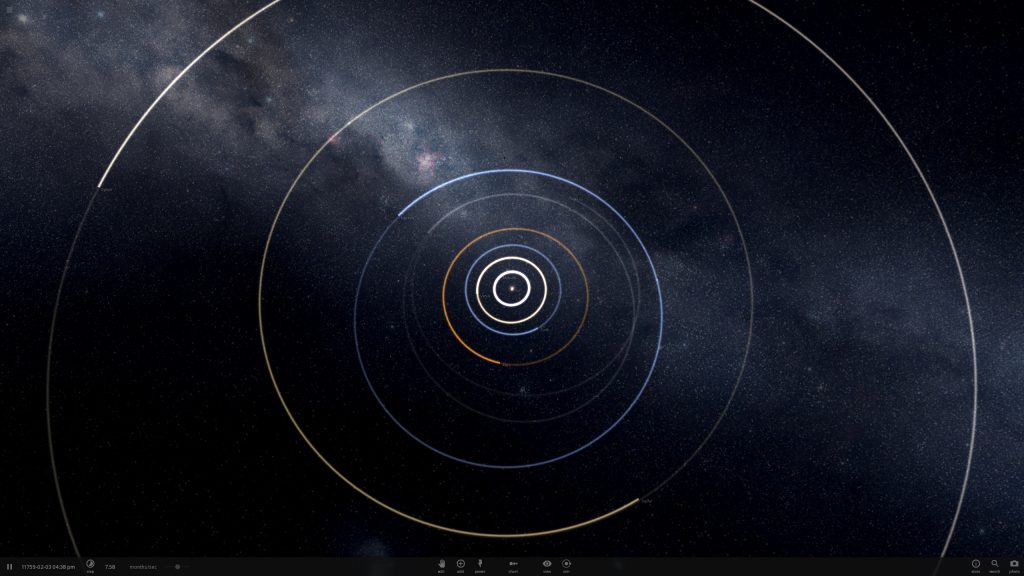
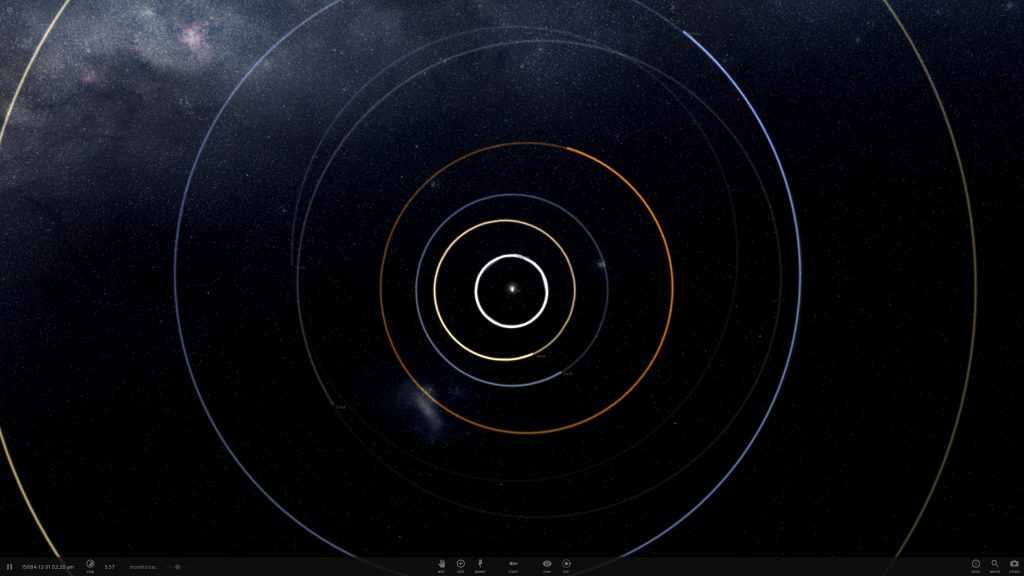
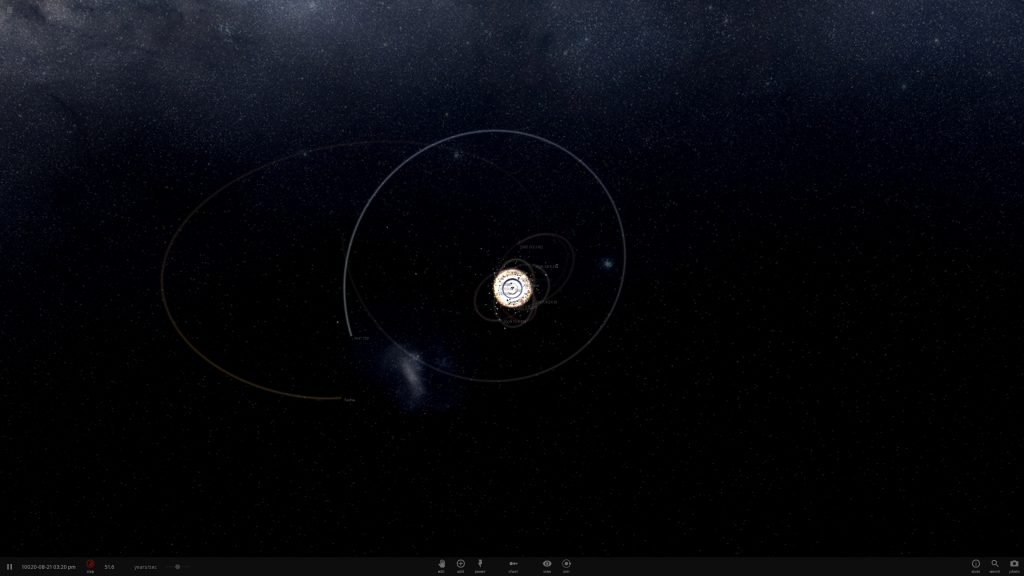
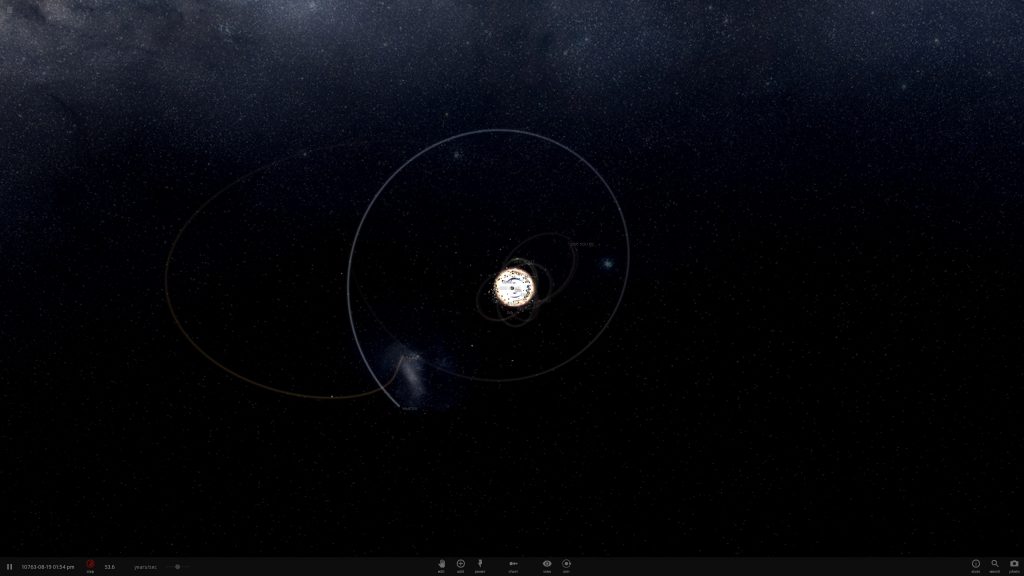
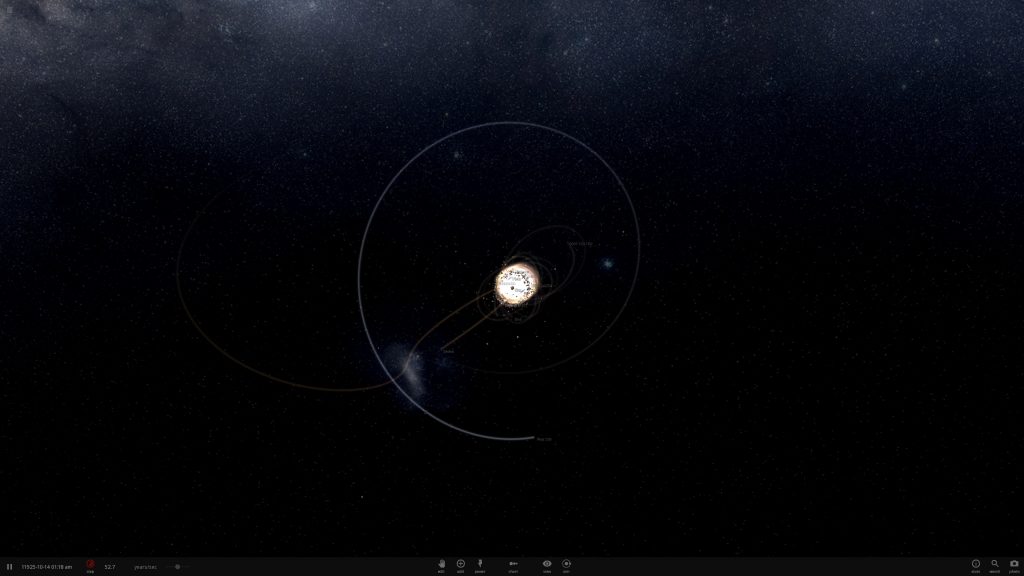
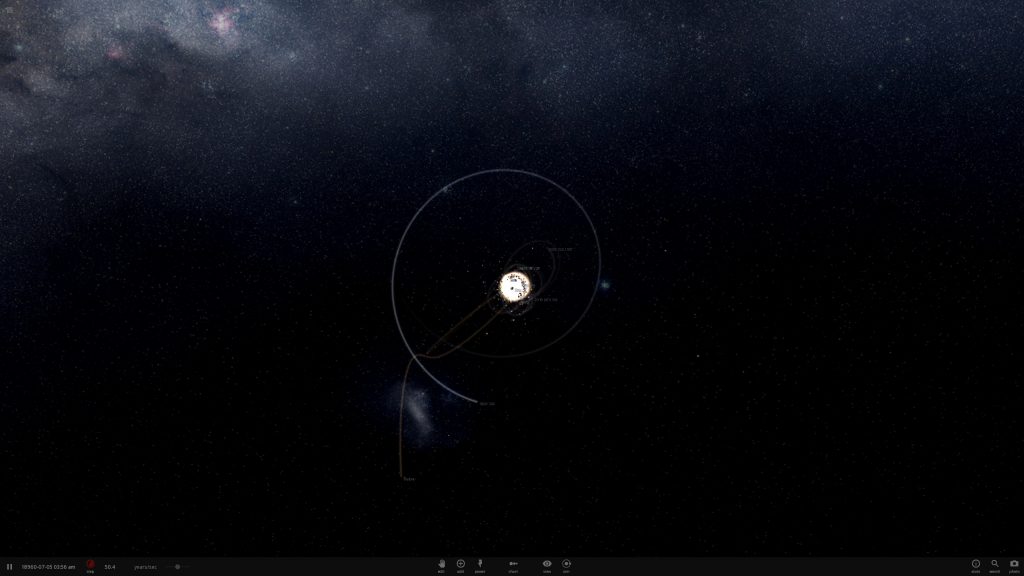
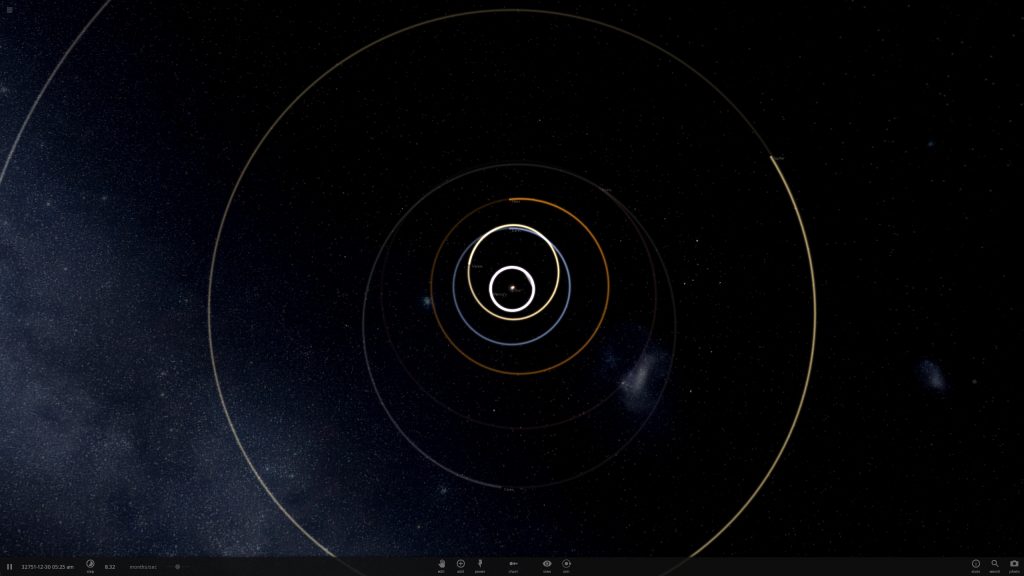
Oh yeah, I forgot to mention it in the article, but the speed of the simulation (in years per second) depends on what hardware is running the simulator. I ran it on an i7-6700K overclocked to 4600MHz, thus the 52 years per second. My son’s j1900 runs it at 5.5 years per second.